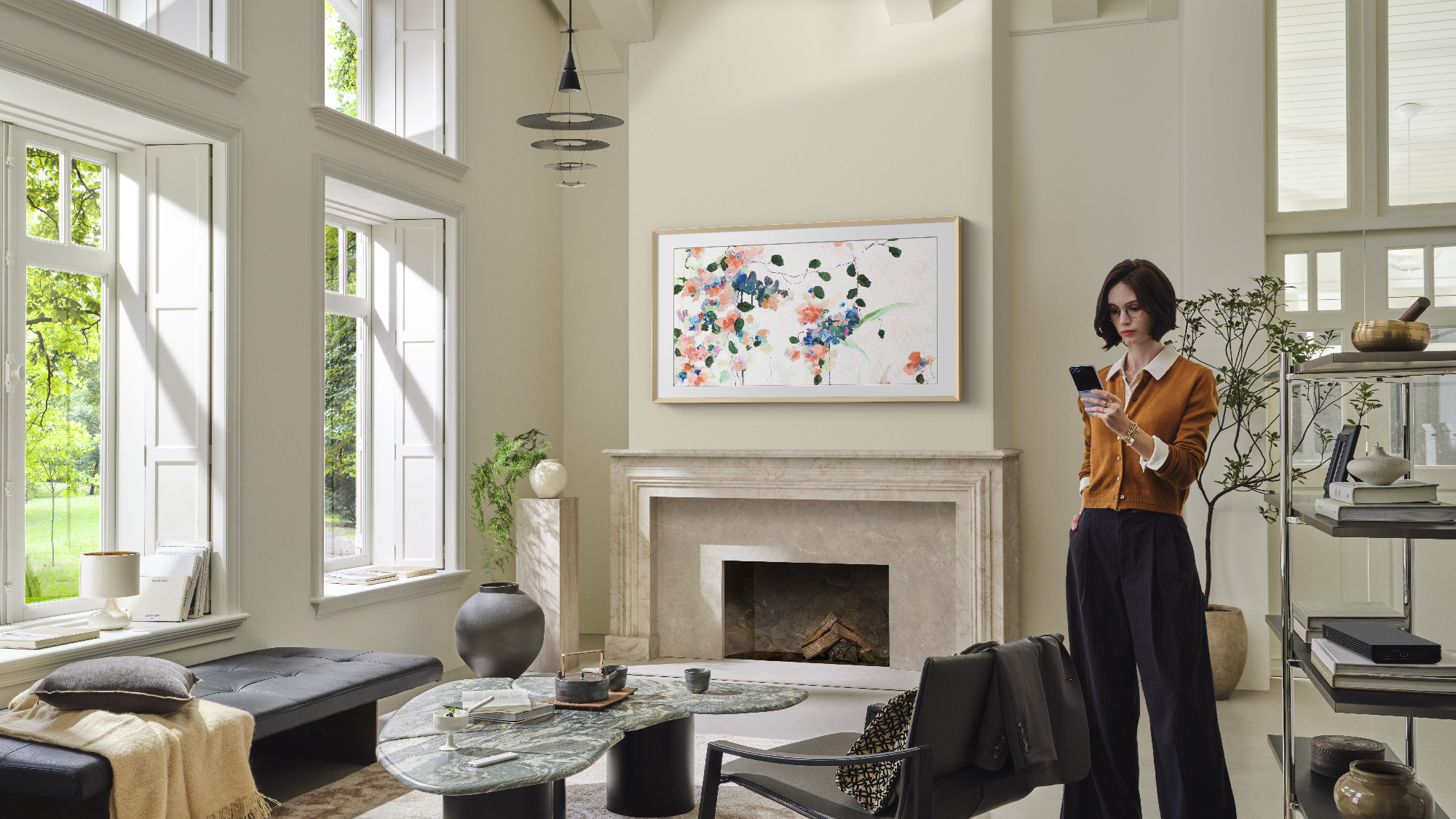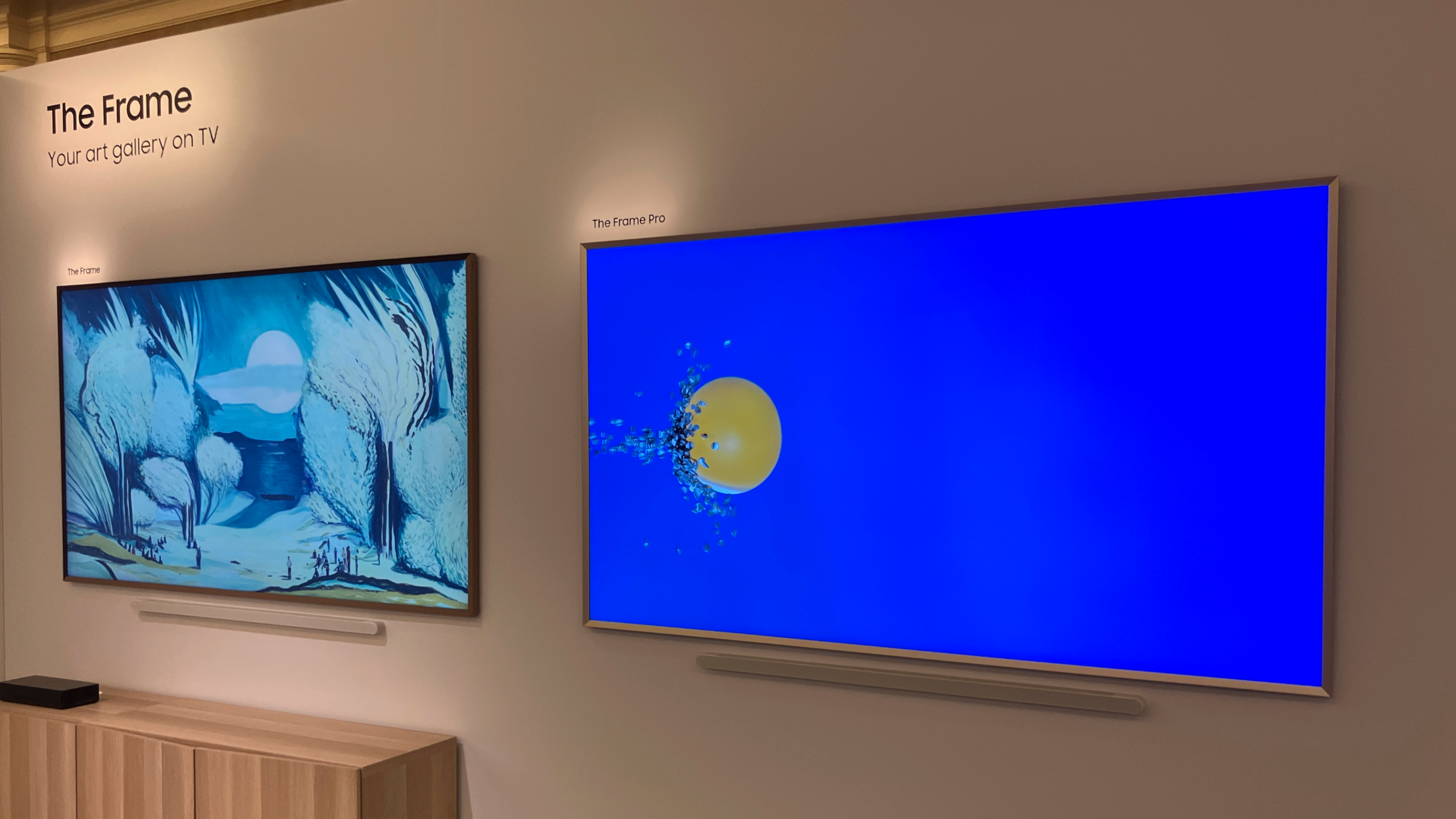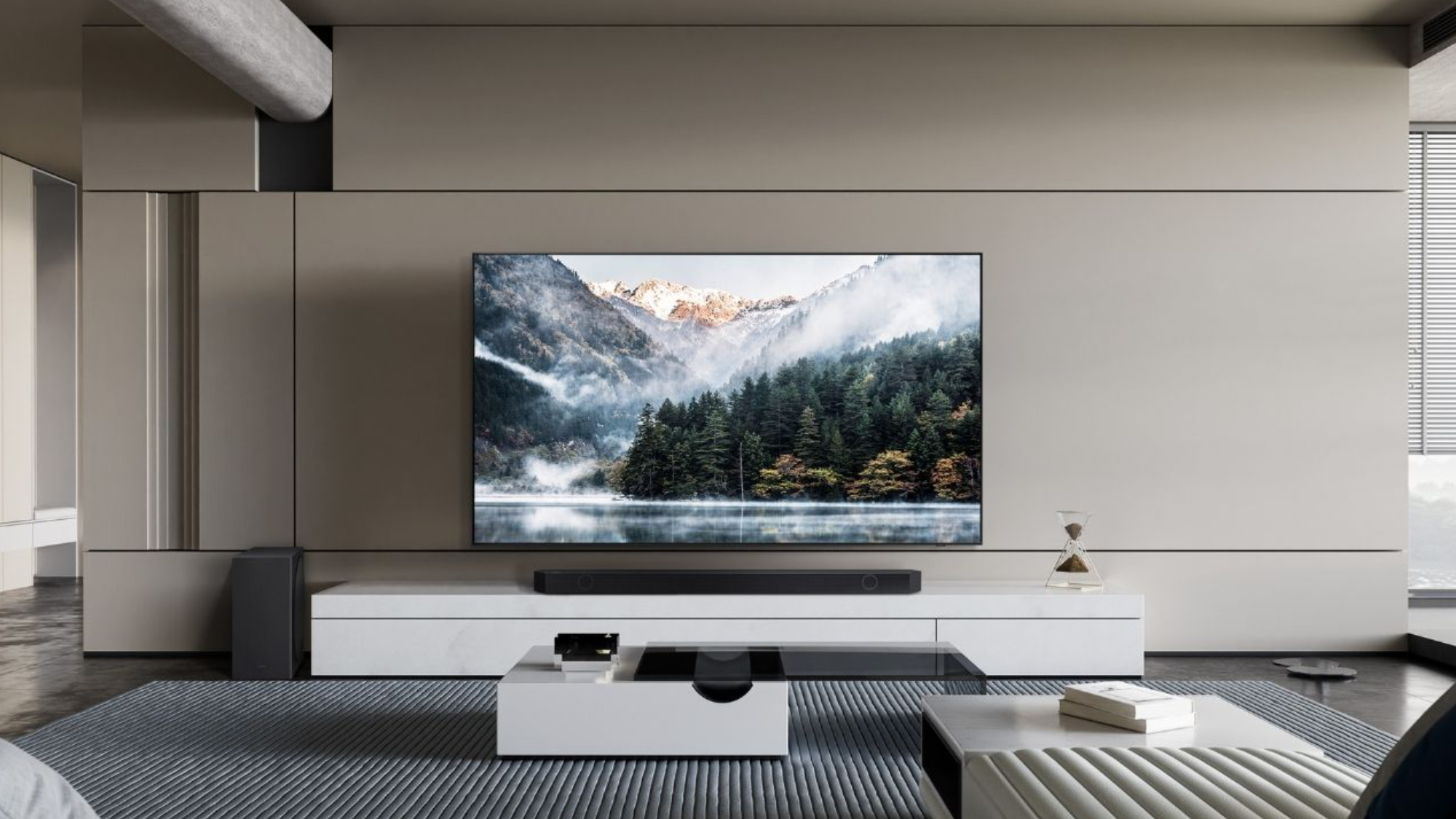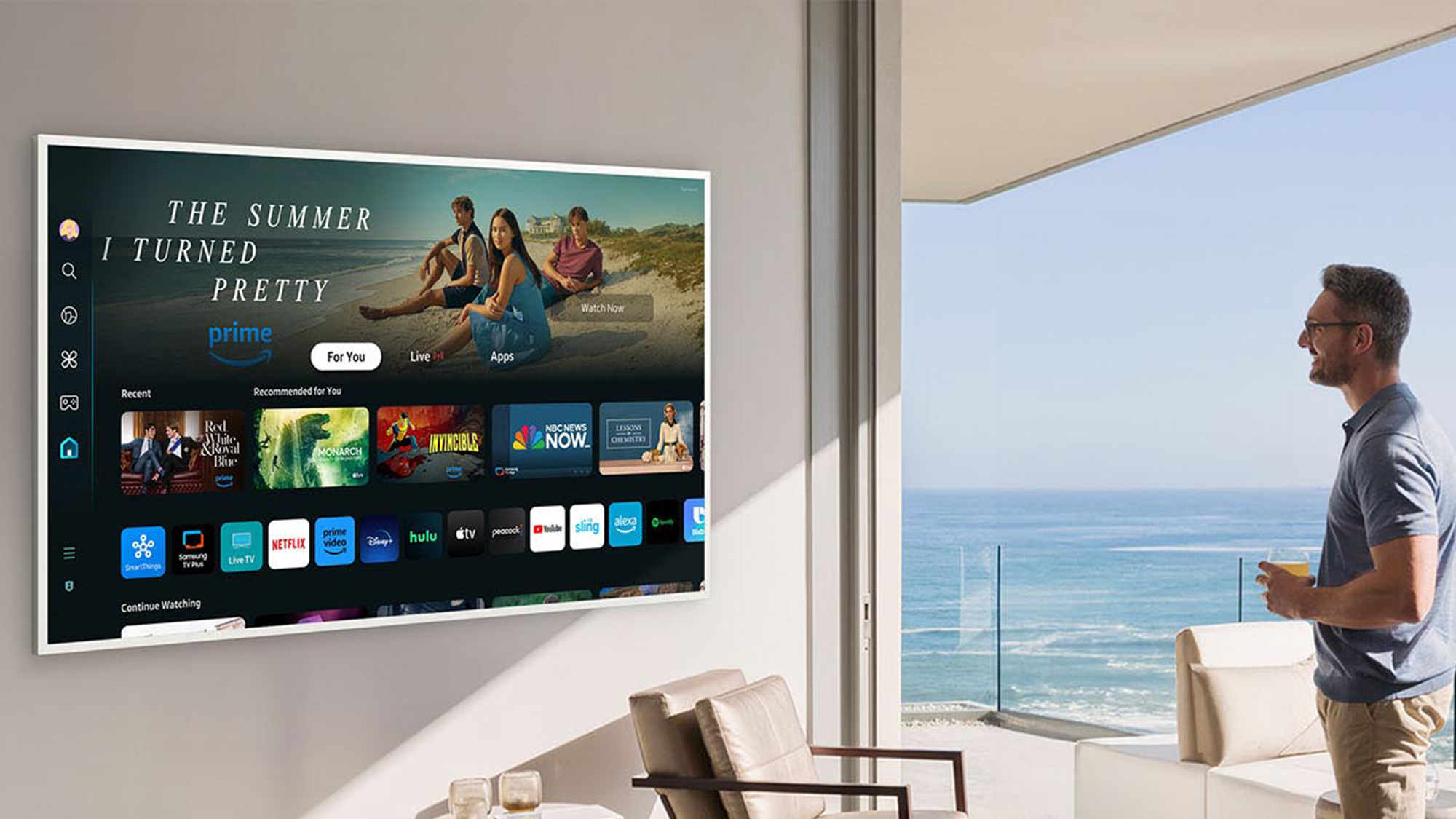I'd love for Samsung to make The Frame OLED — here's why it hasn't happened
Is a design-first TV for nit-nerds even possible?

The Samsung The Frame TV has been a hit, and for good reason. For decades, TVs have essentially been big boxes that look great when they’re on. When they’re off, however, they’re kind of ugly. The Frame reimagines what a TV can do when you’re not actively watching, combining a thin build with a more natural-looking design, an anti-glare glass and software that shows art on the screen. It makes for an image that really can look like a painting — at least at a glance.
At CES 2025, Samsung unveiled a new, upgraded version of The Frame, called The Frame Pro. There's only one problem: While The Frame Pro is being billed as an art TV for those who care more about picture quality, it still doesn’t really have a truly great picture quality.
The problem with The Frame Pro

The Frame Pro is basically an edge-lit TV.
To be clear, The Frame Pro is a step ahead of the standard The Frame TV. But Samsung’s marketing is a little misleading when it comes to how much better it really is. According to Samsung, The Frame Pro offers Mini-LED backlighting. Traditionally, that would mean thousands of LED lights behind the display, which would be individually dimmable to give the TV better control over brightness and backlighting. This has made for much deeper black levels on TVs like the Hisense U8N.
But buried in the fine-print of The Frame Pro is a caveat. While it might technically be using a Mini-LED system, those LEDs are actually arranged in the edges of the TV. That’s right — it's basically an edge-lit TV.
Now, Samsung claims that the Mini-LED system in The Frame Pro does still give it better control over backlighting than traditional edge-lit TVs (like The Frame). But I’d be shocked if the TV ends up offering as much control as other Mini-LED TVs.
The problem with OLED

It seems like there should be an easy solution, right? OLED panels are super thin, don’t produce too much heat and Samsung already uses them in its highest-end TVs. Surely the company could use one of those panels in an even more expensive Frame model.
Not so fast. OLED panels might be perfect if it wasn’t for one issue: burn-in. OLED burn-in essentially happens when there’s one static image being displayed on the screen for long periods of time.
When burn-in happens, certain pixels can degrade faster and produce a kind of ghosting effect. This can seriously reduce the life-span of the organic materials used in OLED screens. Burn-in isn’t as much of an issue these days thanks to technologies that alternate pixels on static images, not to mention the lower brightness level for those art modes, but it still happens, and it would still be a concern, especially for a TV like The Frame, which specializes in displaying static images for long periods of time.
A path forward?

So are there ways around the OLED burn-in issue that would allow for an OLED Frame TV? Well, potentially, but they’re not perfect. For example, the TV could have software limitations that force users to rotate through different images, or that slightly moves the art over longer periods of time.
That, of course, would defeat the purpose of The Frame TV for some people, though — removing the ability to show the art you want to see, when you want to see it. It’s a potential trade-off for those in the know, but also probably hard to explain to users who don’t necessarily have a full understanding of OLED technology and just want to see a TV display their preferred art.
Are there ways around the OLED burn-in issue that would allow for an OLED Frame TV?
There are other display technologies. Real Mini-LED backlighting systems are all the rage right now, especially from brands like Hisense and TCL. But those systems generate a lot more heat than OLED panels — something that could disqualify them from the thin form-factor Samsung is going for.
All that to say, maybe there isn’t really a set path forward for art-style TVs to truly compete with other displays. Eventually hopefully the tech will simply improve – allowing for OLED panels that don’t suffer from burn-in at all, or Micro-LED panels that are ultra efficient and don’t generate too much heat. Or, maybe Samsung will work on other ways to add these advanced technologies to its lineup, such as through advanced cooling technologies or software limitations that help prevent burn-in.
The best compromises
In the meantime, if you’re looking for a TV, you may have a decision to make. You could buy a The Frame Pro TV and simply deal with the fact that it won’t look as good as some other high-end TVs. Or, you could buy a high-end OLED TV like the new Samsung S95F, and simply not use it to constantly display art. Lastly, you could buy a high-end and similarly-priced Mini-LED TV that could be used in an art mode without fear of burn-in, but doesn’t offer the same anti-glare glass or the same ultra-thin build as the Samsung The Frame.
Yeah, unfortunately, you can’t have it all right now – but any of those decisions is perfectly respectable. If you go the OLED route, the Samsung S95D (soon to be replaced with the S95F) is an excellent option, as is the LG G4 OLED, to be replaced soon with the LG G5 OLED. If you go the Mini-LED route, a mid-range option like the Hisense U8N is well-worth the money. And, if you simply want a TV that looks great when you’re not watching TV, and perfectly fine when you are, the Samsung The Frame Pro will likely make a serious case for itself when it rolls out this year.
More from Tom's Guide
Sign up to get the BEST of Tom's Guide direct to your inbox.
Get instant access to breaking news, the hottest reviews, great deals and helpful tips.
Christian de Looper is a freelance writer who has covered every facet of consumer tech, including mobile, audio, home theater, computing, gaming, and even car tech. At Tom’s Guide, Christian covers TV and home theater tech, and has reviewed dozens of TVs, soundbars, and A/V receivers, including those from the likes of Samsung, Hisense, TCL, and Vizio.
You must confirm your public display name before commenting
Please logout and then login again, you will then be prompted to enter your display name.


